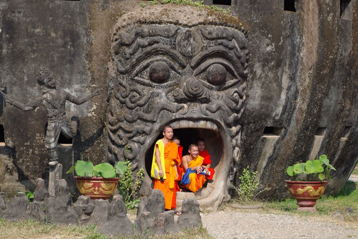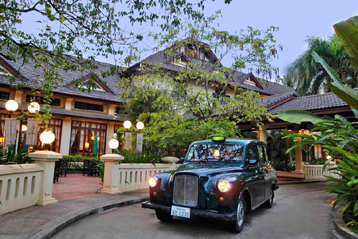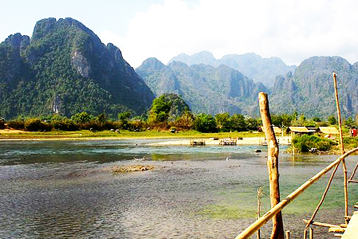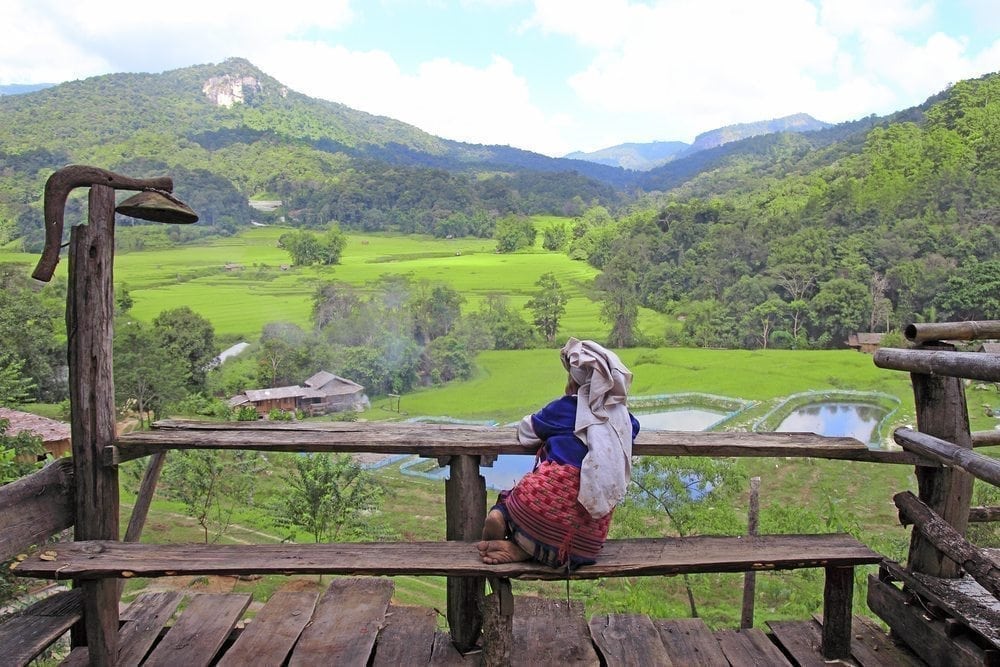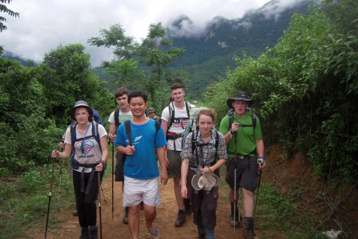Religion
Buddhism
About 60% of the people of Laos – mostly in lowland, with sprinklings of tribal Thais – are Theravada Buddhists. Theravada Buddhism was apparently introduced to Luang Prabang (then known as Muang Sawa) in the late 13th or early 14th centuries, though there may have been contact Mahayana Buddhism during the 8th to 10th centuries and with Tant Buddhism even earlier.
Theravada doctrine stresses the three principal aspects of existence: dukkha (suffering, unsatisfactoriness, disease), anicca(impennanence, transience of all things) and anatta (nonsubstantiality or nonessentiality or reality – no permanent ‘soul’). Comprehension of anicca reveals that no experience, state of mind, no physical object lasts. Trying to hold on to experience, no states of mind, and object that are constantly changing creates dukkha. Anatta is the understanding that there is no part of the changing world we can point to and say ‘This is me’ or “This is God” or “ this the soul”.
About 60% of the people of Laos – mostly in lowland, with sprinklings of tribal Thais – are Theravada Buddhists. Theravada Buddhism was apparently introduced to Luang Prabang (then known as Muang Sawa) in the late 13th or early 14th centuries, though there may have been contact Mahayana Buddhism during the 8th to 10th centuries and with Tant Buddhism even earlier.
Theravada doctrine stresses the three principal aspects of existence: dukkha (suffering, unsatisfactoriness, disease), anicca(impennanence, transience of all things) and anatta (nonsubstantiality or nonessentiality or reality – no permanent ‘soul’). Comprehension of anicca reveals that no experience, state of mind, no physical object lasts. Trying to hold on to experience, no states of mind, and object that are constantly changing creates dukkha. Anatta is the understanding that there is no part of the changing world we can point to and say ‘This is me’ or “This is God” or “ this the soul”.
Monks and Nuns
Unlike other religions in which priests, nuns, rabbis, imams etc make a life long commitment to their religious vocation, being a Buddhist monk or nun be a much more transient experience. Socially, every Lao Buddish male is expected to become a khúu-baa(monk) for at least a short period of his life, optimally between the time he finishes school and starts a career of marries. Men or boys under 20 years of age may enter the Shangha (monastic order) as néhn (novices) and this is not unusual since a family earns merit when one of its sons takes robe and bowl. Traditionally the length of time spent in the wat is three months, during thephansăa ( Buddish lent ), which coincides with the rainy season. However, nowadays spend as little as a week or 15 days to accrue merit as monks or novices. There are, of course, some monks who do devote all or most of their lives to the wat.
Young Monks
There is no similar hermetic order for nuns, but women may reside in temples as náang sii (lay nún ) with shaved heads and white robes.
Spirit Cults
No matter where you are in Laos the practice of phii (spirit) worship – sometimes called animism – won’t be far away. Phii worship pro-dates Buddhism and despite being officially banned it remains the dominant non-Buddhist belief system. But for most Lao it is not a matter of Buddhism or spirit worship. Instead established Buddhist beliefs coexist peacefully with respect for the phii that are believed to inhabit natural objects.
An obvious example of this coexistence is the ‘spirit house’, which you’ll see in or outside almost every home. Spirit houses are often ornately decorated miniature temples, built as a home for the local spirit. Residents must share their space with the spirit and go to great lengths to keep it happy, offering enough incense and food that the spirit won’t make trouble for them.
In Vientiane you can see Buddhism and spirit worship side-by-side at Wat Si Muang. The central image at the temple is not a Buddha figure but the lák méuang (city pillar), in which the guardian spirit for the city is believed to reside. Many local residents make daily offerings before the pillar while at the same time praying to a Buddha figure. A form of phii worship you might actually partake in is the baasii ceremony.
Outside the Mekong River valley, the phii cult is particularly strong among the tribal Thai, especially the Thai Dam, who pay special attention to a class of phii called then. The then are earth spirits that preside not only over the plants and soil, but over entire districts as well. The Thai Dam also believe in the 32 khwăn ( guardian spirits). Măw ( guardian spirits). Măw ( master / shaman ), who are especially trained in the propitiation and exorcism of spirits, preside at important Thai Dam festivals and ceremonies. It is possible to see some of the spiritual beliefs and taboos in action by staying in a Katang village during a trek in the forest of Dong Phu Vieng NPA.
The Hmong-Mien tribes also practice animism, plus ancestral worship. Some Hmong groups recognise a pre-eminent spirit that presides over all the earth spirits others do not. The Akha, Lisa and other Tibeto-Burman groups mix animism and ancestor cults.
There is no similar hermetic order for nuns, but women may reside in temples as náang sii (lay nún ) with shaved heads and white robes.
Spirit Cults
No matter where you are in Laos the practice of phii (spirit) worship – sometimes called animism – won’t be far away. Phii worship pro-dates Buddhism and despite being officially banned it remains the dominant non-Buddhist belief system. But for most Lao it is not a matter of Buddhism or spirit worship. Instead established Buddhist beliefs coexist peacefully with respect for the phii that are believed to inhabit natural objects.
An obvious example of this coexistence is the ‘spirit house’, which you’ll see in or outside almost every home. Spirit houses are often ornately decorated miniature temples, built as a home for the local spirit. Residents must share their space with the spirit and go to great lengths to keep it happy, offering enough incense and food that the spirit won’t make trouble for them.
In Vientiane you can see Buddhism and spirit worship side-by-side at Wat Si Muang. The central image at the temple is not a Buddha figure but the lák méuang (city pillar), in which the guardian spirit for the city is believed to reside. Many local residents make daily offerings before the pillar while at the same time praying to a Buddha figure. A form of phii worship you might actually partake in is the baasii ceremony.
Outside the Mekong River valley, the phii cult is particularly strong among the tribal Thai, especially the Thai Dam, who pay special attention to a class of phii called then. The then are earth spirits that preside not only over the plants and soil, but over entire districts as well. The Thai Dam also believe in the 32 khwăn ( guardian spirits). Măw ( guardian spirits). Măw ( master / shaman ), who are especially trained in the propitiation and exorcism of spirits, preside at important Thai Dam festivals and ceremonies. It is possible to see some of the spiritual beliefs and taboos in action by staying in a Katang village during a trek in the forest of Dong Phu Vieng NPA.
The Hmong-Mien tribes also practice animism, plus ancestral worship. Some Hmong groups recognise a pre-eminent spirit that presides over all the earth spirits others do not. The Akha, Lisa and other Tibeto-Burman groups mix animism and ancestor cults.
More guide...
Responsible Travel
Being a responsible eco tour operator is at the heart of what ACTIVETRAVEL ASIA is all about. From the start, we have been committed to offering low-impact tours that benefit traveler and host alike. We work with local communities, businesses and individuals to develop sustainable tourism opportunities that help local economies while minimizing negative environmental and cultural impacts.
Asia Travel News


